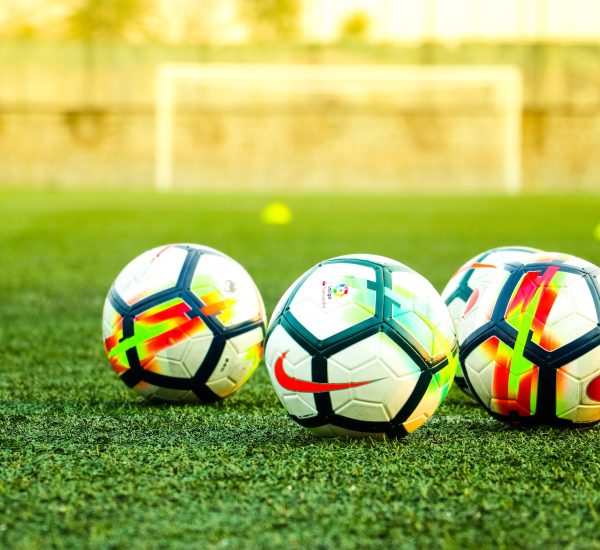There are several different soccer dribbling drills you can do in order to improve your skills. These drills focus on developing your ball control, awareness and speed. These exercises can also help improve your overall game.
Read on to learn more about the different techniques you can try. You can also learn how to add complexity to your dribbling drills.
Various dribbling techniques
Soccer dribbling techniques involve changing direction and speed, and can make it easier to get past defenders. Proper foot placement is essential, as well as the ability to use your lower peripheral vision. In addition, it is important to learn to control the ball in tight spaces.
Running dribbling is the most difficult type of dribbling. It is most commonly used by attacking players. It involves less fancy moves and poses fewer risks of losing the ball. You must learn to change your speed and shift your weight to free up space for passing or shooting.
Dribbling techniques include using the outside and inside of your foot. You can also dribble using your weaker foot. To learn how to use these types of dribbling, practice using your weaker foot. For example, if your strong foot is a little stronger than your weak foot, use that foot to dribble.
Another effective dribbling technique is to manipulate the ball to screen the defender. While dribbling the ball, it is crucial to maintain awareness and keep away from getting tackled. You can also pass the ball to a teammate who is far enough away to receive the pass.
Dribbling is one of the most fundamental skills in soccer. As such, it is crucial to improve dribbling technique with a consistent training regimen. You can watch soccer matches and use tools like Trace to improve your spatial intelligence.
Adding complexity to dribbling technique
Soccer dribbling is a skill that can be improved by doing a variety of exercises. The more repetitions you get, the better your technique will be. Over time, you can incorporate more complex moves into your game.
Here are few soccer dribbling drills to help you improve your dribbling. These drills require you to use all surfaces of your feet and to make quick touches. This will help you to improve your game and achieve technical mastery.
Start by practicing dribbling with the ball in front of your body. This will help you to shift your body weight forward and to shift your weight into the direction that you want to move the ball. Then, as you get better at it, add cones to practice walking with the ball.
Another drill involves using the inside and outside of both feet to dribble through cones. Players have to make quick touches on the ball and make a quick turn to get back to the first cone. This drill requires complete concentration and helps you to control the ball better under pressure. It also helps improve your physical fitness and helps you make good turns during a game.
You can use the same drills with different age groups. You can change the level of complexity to suit your kids’ ability. For instance, the younger kids can use smaller cones to practice their dribbling technique. For older kids, you can make the goals larger and add bigger cones.
Developing ball control and awareness
Soccer dribbling drills are an excellent way to develop a player’s ball control and awareness. These exercises encourage players to keep the ball close to their body, improve their vision and speed, and be decisive when facing a defender.
They also help players improve their consistency and focus. Developing ball control and awareness through soccer scrimmages and drills will make your players more effective on the field.
Before beginning soccer dribbling drills, players should review their dribbling technique. They should also watch soccer matches to develop their spatial awareness. Some players may find a drill challenging, but they should keep in mind that dribbling is about creating passing opportunities.
Another drill that helps develop ball control and awareness is the wall ball drill. This drill involves dribbling and passing the ball with just one foot. Players should rotate their positions throughout the drill, and they should avoid making the defender try to steal the ball.
In addition to developing ball control, soccer dribbling drills can improve the confidence of a player. By practicing soccer dribbling drills, players develop awareness habits and improve their game vision. As soccer players become more confident, they will be able to handle the ball better on their first touch.
Developing a player’s dribbling technique
Soccer dribbling drills can help a player develop his or her touch and control of the ball. They also teach players to read their surroundings and keep close control of the ball. As a result, they will become more agile and quick to make decisions.
The first step in this drill is to set up the playing area. Use cones to mark the starting and finishing locations. Divide the players into even teams. Have the players stand in line behind two starting cones. For this exercise, assign one player to be the “shark.” The shark starts outside the playing area without a soccer ball. As each player dribbles the ball, they must cross over to the other team’s side.
Once a player has mastered these fundamentals, they can work on developing their first touch. This is a critical skill in soccer that helps players control the ball when receiving a pass or gathering the ball after a broken play. The six simple exercises below will help improve a player’s first touch and ball handling. Start the drill slowly and add defenders as necessary.
Another step in developing a player’s dribbling skill is completing dribbling drills with different foot surfaces and different rules. The player needs to control the ball and keep his eyes on the ball. Once the ball is passed, the player must use one or two touches to score. Then, he or she must retrieve the ball after completing the drill.
Other dribbling drills
One of the most important skills in soccer is dribbling with the ball. It’s a technique that requires you to control the ball with two feet while running away from your opponent. It’s used in many different situations, from winning one-on-one situations to racing away from a defender. Developing dribbling skills is an essential part of soccer training and is an important skill to have when you’re young.
This dribbling drill is an excellent way to increase players’ confidence in an 1 on 1 situation and is also a great way to develop a good finishing technique. Players should be able to get through at least four gates before the opponent tags them, and the number of players should be adjusted accordingly. If the players are older, consider putting a time limit on how many players can pass at once and a goal to beat the clock.
This dribbling drill is very simple and can help players improve their touch and control of the ball. It can be performed anywhere from 0.8 to 1.5 meters apart. A player must dribble through the cones while keeping his eyes up and controlling the ball at all times. Then, he must return to the first cone at the highest speed possible. The main advantage of this drill is that it improves players’ focus and consistency.
Another effective dribbling drill involves setting up cones at different distances around the soccer field. This exercise helps players develop a quicker touch. Players must use their weaker foot to dribble and touch the ball. This drill is also effective at improving body positioning.



